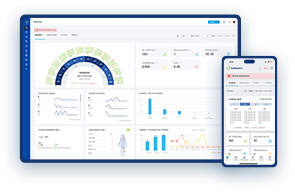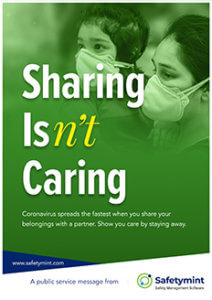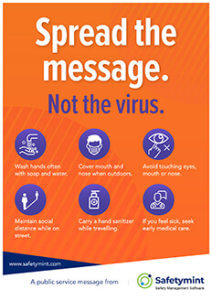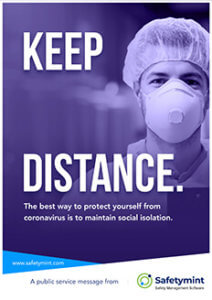
Coronavirus at the Workplace: Important Facts you Should Know.
The Coronavirus outbreak has caused severe and mounting disruption to workplaces around the globe. As the evolving COVID-19 virus continues to spread beyond its origin in Wuhan, China, companies are gearing up with contingency plans and policies to keep their workspace corona-free.
Most severely affected regions have issued preventive frameworks that include sick leave, furloughs, and work from home scenarios. However, industries in unaffected regions cannot be complacent to a transmissible virus outbreak that has been termed as a Public Health Emergency of International Concern by the World Health Organization.
In this blog, we take a deep dive to unravel the facts about the coronavirus, where it lingers and how it spreads. We’ll also look at safe work procedures and safety systems that will inadvertently trigger preventive reactions.
Understanding COVID-19:
To sum it up, the Coronavirus is a highly contagious disease that spreads from person to person or in some cases, animal to person. It mimics illness such as pneumonia, cough, cold or shortness of breath. In severe cases, the COVID-19 virus can cause acute respiratory failure or kidney failure leading to death.
How is Coronavirus transmitted?
The Coronavirus spreads via human transmission when a person coughs or sneezes. The droplets from coughing and sneezing can create a viral cloud that extends up to 6 meters. A person can contract the diseases when he comes in close proximity to a person who releases the infected fluid directly onto him. COVID-19 can also be transmitted when the infected droplets come into contact with surfaces or objects. A person can infect themselves by touching the contaminated surface and then touching any part of their face.
What are the COVID-19 hotspots to look out for in the Workplace?
- Any person with symptoms relating to cold, cough or fever.
- Any surface that people come in regular contact can be vulnerable like doorknobs, office stationery, washbasins, lift buttons.
- Digital devices and machinery that are regularly used.
- Pantry items like plates, spoons, cups, used tissues, water dispensers.
- Personal belongings.
- Restrooms and other sanitary items.
- Cluster or group gatherings.
What are the precautions to avoid COVID-19 infection?
- Keep your hands clean at all times, follow the prescribed process for keeping your hands clean. Try to curb your instinct to touch your face, either for rubbing your eyes, nose or other parts of your face.
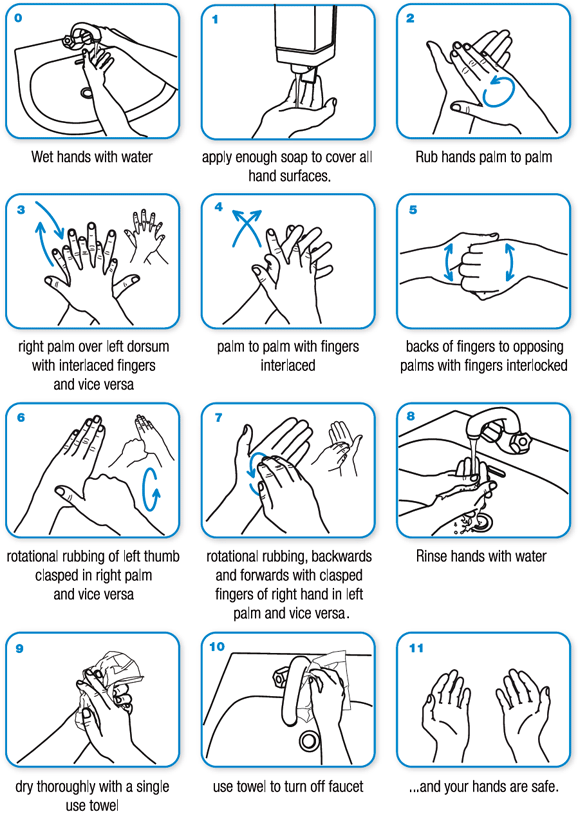
Source: WHO
- Avoid customary handshakes, hugs, fist bumps or other forms of person to person contact till the epidemic is controlled.
- Reinforce your workplace hygiene with routine cleaning of workstations, doorknobs, and other high-touch zones. Promote good respiratory hygiene
- Encourage employees with COVID-19 symptoms to stay at home and ensure that the management exercises flexible sick leave policies.
- Make sure that your EHS team is stocked with adequate Personal Protective Equipment (PPE) like face masks, alcohol disinfectants.
- Issue travel advisory to all employees. Ensure that they have the latest situational awareness to take travel precautions.
- Utilize safety posters and other awareness programs like safety meetings (toolbox talks) or emailers to keep employees informed about safe practices and techniques to keep themselves and their families safe.
- Do not discriminate against a person or group affected by the virus. The best you can do to help is contact emergency services and local health officials to contain the situation.
- Promote proper respiratory hygiene by educating employees on the proper use of a face mask along with the proper coughing and sneezing etiquette.
- Keep your distance from stray animals as the Coronavirus is believed to be a Zoonotic disease (transmits from animals).
Effective Industrial safety solutions to contain COVID-19:
While scientists have been working at unprecedented speed to resolve the outbreak, Occupational Health and Safety (OHS) professionals have also been scrambling to find solutions to minimize incidents and avoid disruptions at the workplace.
Controlling Corona infections boils down to promoting a hygienic behavioral culture throughout the workforce. Reports suggest that most people tend to touch any part of their face more than 20 times in an hour. While this seems like a conventional and harmless practice, the current outbreak requires people to move away from general habits and adopt restraint.
While modifying naturally ingrained behavior seems improbable, implementing an incident reporting software, that uses a behavior-based system to observe and report unsafe behavior, engage positive reinforcement techniques and keeps an updated and companywide trail of behavioral reports in a unified and easy-to-use platform – can proactively influence change in behavior.
Biomedical laboratories that handle live samples of the specimen can be the most vulnerable work environment for employees. A permit to work software can ensure that your work location is secure from all anomalies before work commences and that all workers’ movement is tracked and accounted for in real-time.
As the situation keeps evolving, restructuring your organization’s safety culture to seamlessly integrate and implement a preventive environment, could be the best defense to keeping your workspace corona-free.
Free Coronavirus Awareness Posters
Download high-resolution files free
Joshua Martyn was a content manager at Safetymint, crafting helpful contents that enlighten readers and EHS professionals alike, about fresh trends, technologies and perspectives from the world of safety.
